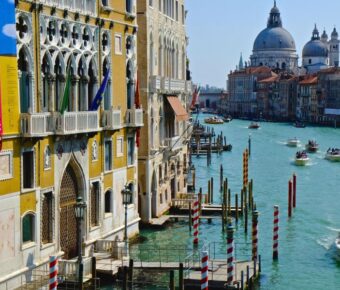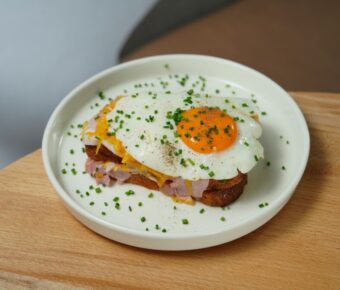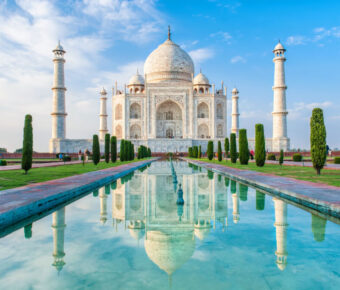
Munich vs Frankfurt: A Tale of Two German Cities – Cost, Culture, and Lifestyle Compared
Munich and Frankfurt stand out as two of Germany’s most compelling cities, each offering unique experiences for travelers. Munich shines with its traditional Bavarian charm, historic architecture, and world-famous beer gardens. Frankfurt impresses visitors with its modern skyline, international vibe, and role as Europe’s financial hub.
Travelers who want a more authentic German cultural experience should pick Munich, while those seeking a modern, cosmopolitan atmosphere will feel at home in Frankfurt. Munich tends to be more expensive and tourist-focused, with attractions like the Marienplatz and Oktoberfest drawing millions each year. Meanwhile, Frankfurt offers better value, excellent transport links, and a mix of historic sites with contemporary amenities.
The cities sit about 4 hours apart by train, making it possible to visit both during a German adventure. Each city represents a different side of Germany – Munich embodies the country’s rich traditions, while Frankfurt showcases its forward-looking spirit.
Table of Contents
- History and Culture
- Historic Munich
- Frankfurt’s Legacy
- Prominent Festivals
- City Landmarks and Architecture
- Munich’s Architectural Marvels
- Frankfurt’s Skyline and Skyscrapers
- Transportation and Accessibility
- Navigating Munich Efficiently
- Getting Around Frankfurt
- Accommodation and Lodging
- Hotels in Munich
- Staying in Frankfurt
- Budget-Friendly Options
- Culinary Exploration
- Savoring Bavarian Cuisine
- Frankfurt’s Culinary Scene
- Entertainment and Nightlife
- Munich’s Lively Evenings
- Frankfurt After Dark
- Shopping and Leisure
- Munich’s Shopping Avenues
- Retail Therapy in Frankfurt
- Travel Tips and Insights
- Best Time to Visit
- Safety Considerations
- Maximizing Your Travel Experience
- Frequently Asked Questions
- What are the unique lifestyle differences someone should expect when choosing between living in Munich versus Frankfurt?
- How does the cost of living in Munich compare with that in Frankfurt, considering factors like housing, food, and transportation?
- Which city offers a more traditional and festive Christmas market experience, Munich or Frankfurt?
- Can you elaborate on the cultural and social contrasts between Munich and Frankfurt for someone planning to visit?
- In terms of business and career opportunities, how do Munich and Frankfurt differ?
- Considering city size and population density, how does the living space in Munich compare to that in Frankfurt?
- Book Your Dream Experience
- More Travel Guides
History and Culture
Munich and Frankfurt showcase Germany’s diverse cultural heritage through distinct traditions, architecture, and celebrations that span centuries. Each city tells its own unique story of growth and transformation.
Historic Munich

Benedictine monks founded Munich in 1158, and it grew from a medieval settlement into Bavaria’s proud capital. The city’s historic center features the iconic Marienplatz, home to the Gothic New Town Hall with its famous Glockenspiel clock tower.
The Residenz, Germany’s largest city palace, stands as a testament to Munich’s royal past. Built in 1385, it housed Bavarian rulers for over 400 years. Its 130 rooms display treasures from the Renaissance, Baroque, and Rococo periods.
During the 19th century, King Ludwig I transformed Munich into a cultural hub. He commissioned grand buildings like the Alte Pinakothek art museum and the Ludwigstrasse, a magnificent boulevard lined with neo-classical architecture.
Frankfurt’s Legacy

Frankfurt’s history dates back to Roman times, but it truly flourished as a major trading center in the Middle Ages. The city gained prominence as the coronation site for Holy Roman Emperors at the Frankfurt Cathedral.
The Römerberg, Frankfurt’s medieval town square, was once home to important trade fairs. Its distinctive half-timbered buildings represent classic German architecture, though many are reconstructions after World War II damage.
The city earned its nickname “Mainhattan” in the 20th century, becoming Germany’s financial powerhouse. Modern skyscrapers now stand alongside restored historic buildings, creating a unique blend of old and new.
Prominent Festivals
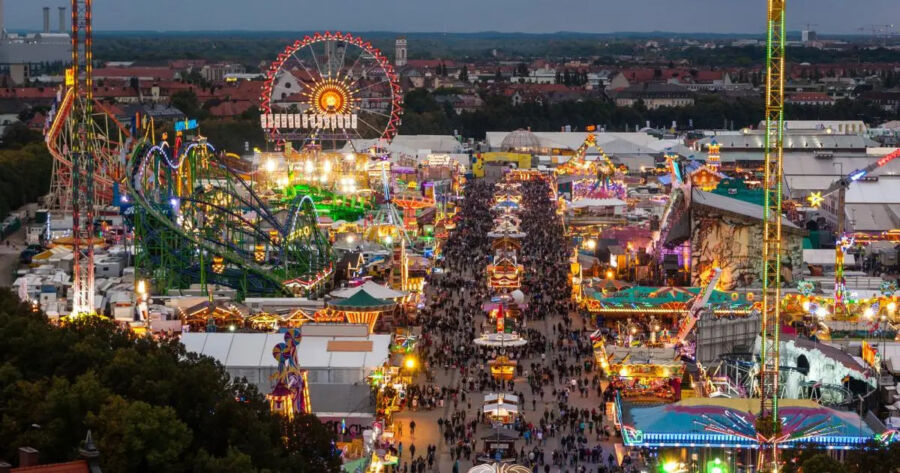
Oktoberfest reigns as Munich’s most famous celebration, drawing 6 million visitors yearly. The 16-day festival began as a royal wedding celebration in 1810 and now features traditional Bavarian music, folk costumes, and beer tents.
The Starkbierfest, Munich’s “strong beer festival,” takes place during Lent. Local breweries serve their most potent beers alongside traditional food and entertainment.
Frankfurt’s Christmas Market dates back to 1393 and fills the Römerberg with wooden stalls, crafts, and seasonal treats. The city also hosts Europe’s largest book fair each October, welcoming publishers and readers from around the globe.
City Landmarks and Architecture
Munich and Frankfurt showcase completely different architectural styles that reflect their unique histories and cultural identities. Munich keeps its traditional Bavarian charm while Frankfurt stands out with its modern financial district.
Munich’s Architectural Marvels

The heart of Munich beats at Marienplatz, where the stunning Neo-Gothic New Town Hall dominates the square with its ornate facade and famous Glockenspiel clock show. The square comes alive with tourists snapping photos of its intricate details.
The impressive Nymphenburg Palace spreads across 490 acres with its Baroque architecture and perfectly manicured gardens. Its grand halls and spectacular painted ceilings make it a must-see spot.
The Alte Pinakothek houses one of Europe’s most important art collections in a beautiful Neo-Classical building. Its red-brick exterior and arched windows create an elegant backdrop for the masterpieces inside.
Frankfurt’s Skyline and Skyscrapers
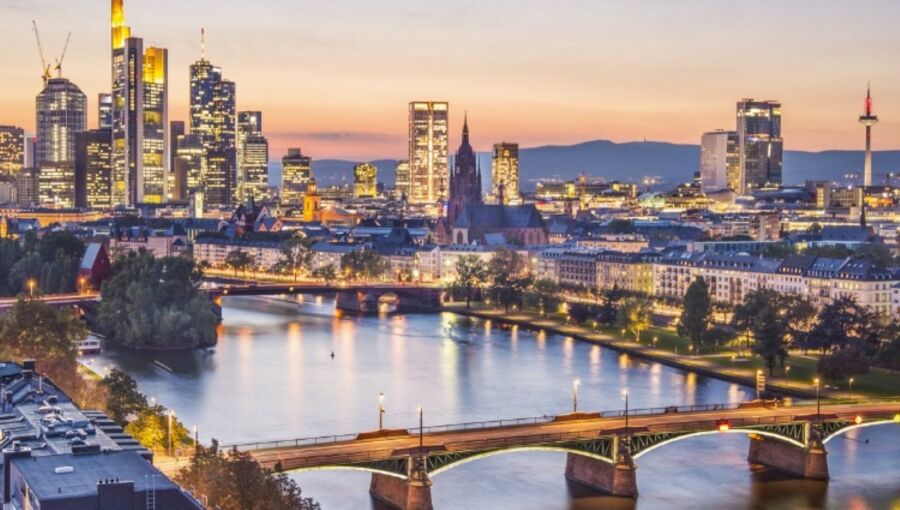
Frankfurt’s modern skyline earned it the nickname “Mainhattan” after its collection of gleaming skyscrapers along the Main River. The Main Tower offers the best viewing platform to take in the city’s architectural beauty.
The contrast between old and new defines Frankfurt’s charm. The reconstructed Römerberg square features traditional German architecture with its timber-framed buildings and historic town hall.
The 56-story Commerzbank Tower stands as Germany’s first ecological high-rise building. Its innovative design includes sky gardens every 12 floors and a natural ventilation system.
The Cathedral of St. Bartholomew adds historic beauty to the modern landscape. Its red sandstone tower reaches 95 meters high and offers amazing city views.
Transportation and Accessibility
Both Munich and Frankfurt offer excellent public transport networks that make getting around simple and stress-free. The cities feature integrated systems of trains, buses, and trams that connect all major areas.

Munich’s public transport system ranks among Europe’s finest. The U-Bahn and S-Bahn trains form the backbone of the network, covering most parts of the city. Trains run frequently from early morning until late at night.
The U-Bahn features 8 lines that reach nearly every neighborhood. Bright blue trams add another layer of connectivity, perfect for shorter trips between stations.
Munich Airport sits about 40km from the city center. The S1 and S8 trains zip travelers downtown in about 45 minutes. Buses and taxis provide additional airport transfer options.
Getting Around Frankfurt
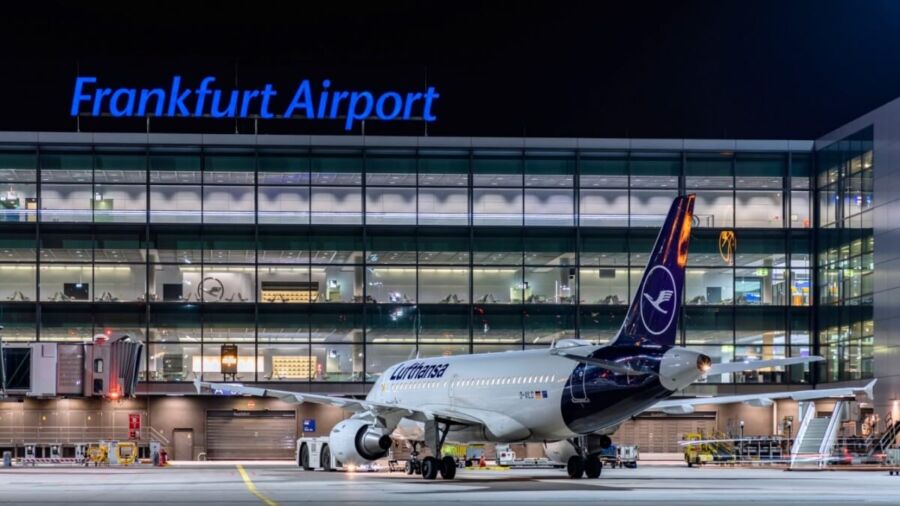
Frankfurt’s compact size makes it easy to navigate. The U-Bahn network includes 9 lines that crisscross the city. The S-Bahn connects outlying areas and suburbs efficiently.
Buses fill the gaps between train routes. Most tourist spots sit within walking distance of a station or bus stop.
Frankfurt Airport connects to the city via the S8 and S9 trains. The trip to central Frankfurt takes just 15 minutes.
Both cities maintain wheelchair-accessible stations and vehicles. Elevators and ramps enable smooth travel for those with limited mobility.
Accommodation and Lodging
Munich and Frankfurt offer diverse places to stay, from luxury hotels to budget-friendly hostels. The two cities have different pricing levels and accommodation styles that match their unique characters.
Hotels in Munich

Munich’s hotel scene mixes traditional Bavarian charm with modern comfort. The city center features many upscale hotels with classic architecture and premium service. Most luxury hotels cluster around Maximilianstrasse and Karlsplatz.
Mid-range hotels and accommodations are plentiful in the Schwabing and Au-Haidhausen districts. These areas give easy access to public transport and local attractions.
Room rates in Munich tend to spike during Oktoberfest and Christmas markets. Booking 3-4 months ahead saves money during these busy times.
Staying in Frankfurt

Frankfurt’s skyline reflects its accommodation options. Glass towers hold sleek business hotels, while old town streets feature boutique guesthouses.
The Bahnhofsviertel area near the train station has many mid-range hotels. The Westend district caters to luxury travelers with its fancy hotels and serviced apartments.
Many hotels in Frankfurt target business travelers, offering features like conference rooms and airport shuttles. Prices drop on weekends when business travelers leave.
Budget-Friendly Options
Both cities have good hostels and budget hotels. Frankfurt, however, wins on price, with cheaper rates than Munich year-round.
Student areas like Munich’s Maxvorstadt have affordable hostels and guesthouses. These spots often include free breakfast and WiFi.
Frankfurt’s hostels concentrate in Sachsenhausen and near the main station. Many offer private rooms that cost less than standard hotels.
Youth hostels in both cities maintain high standards. They’re clean, safe, and often rival budget hotels in comfort and amenities.
Culinary Exploration
Both Munich and Frankfurt offer unique food experiences that showcase Germany’s diverse culinary heritage. Each city brings its own special dishes and dining traditions to the table.
Savoring Bavarian Cuisine

Munich’s food scene centers around hearty Bavarian specialties. The city’s famous beer gardens serve as perfect spots to try Weißwürste (white sausages) with sweet mustard and fresh pretzels.
The city takes pride in its Haxen – crispy roasted pork knuckle that pairs perfectly with a cold Maß (liter) of beer. Local beer halls like the Hofbräuhaus serve these classics year-round.
Leberkäse, a type of meatloaf, makes for a quick lunch served in a roll. You’ll find it at street vendors and butcher shops across Munich.
Frankfurt’s Culinary Scene
Frankfurt’s signature dish is Frankfurter Rippchen – smoked pork chops served with sauerkraut and mashed potatoes. It’s best enjoyed at traditional apple wine taverns in Sachsenhausen.
The city’s famous Grüne Soße (green sauce) contains seven specific herbs and is served over boiled eggs or potatoes. Local restaurants make it fresh daily during spring and summer.
Apfelwein (apple wine) is Frankfurt’s drink of choice. This tart cider comes served in special ribbed glasses called Geripptes. Traditional taverns offer it alongside local specialties.
The city’s indoor market, Kleinmarkthalle, showcases local treats and international foods. You’ll find fresh Frankfurter Würstchen (Frankfurt sausages) alongside global delicacies.
Entertainment and Nightlife
Both cities offer exciting entertainment scenes, with Munich’s traditional beer halls and Frankfurt’s modern clubs creating distinct after-dark experiences.
Munich’s Lively Evenings

The famous Hofbräuhaus sits at the heart of Munich’s nightlife, serving huge mugs of beer and traditional Bavarian food while live bands play folk music.
The trendy Glockenbachviertel neighborhood draws younger crowds with its mix of cocktail bars and dance clubs. You’ll find everything from cozy pubs to modern nightclubs playing electronic music.
In summer, Munich’s beer gardens come alive. The gardens in Olympic Park offer stunning views of the city and Alps while you enjoy a cold drink under chestnut trees.
Frankfurt After Dark

Frankfurt’s club scene thrives in former industrial spaces, with Robert Johnson leading the techno music revolution in intimate underground venues.
The historic Sachsenhausen district features traditional apple wine taverns next to modern bars. Many spots here offer amazing views of Frankfurt’s lit-up skyline.
River Main comes alive at night with evening cruises featuring drinks and music. The waterfront promenades are lined with outdoor bars and cafes perfect for warm evenings.
The financial district transforms after work hours into a sophisticated nightlife zone, with rooftop bars offering craft cocktails and city views.
Shopping and Leisure
Both cities offer unique retail experiences and entertainment options that cater to different shopping styles and budgets. Munich leans toward upscale boutiques and traditional markets, while Frankfurt combines modern malls with charming pedestrian zones.
Munich’s Shopping Avenues

The famous Kaufingerstrasse stands as Munich’s premier shopping destination. This pedestrian zone features high-end fashion stores and local boutiques nestled between historic buildings.
Maximilianstrasse attracts luxury shoppers with designer brands like Gucci and Louis Vuitton. The street’s stunning architecture adds to the shopping experience.
The Viktualienmarkt offers a different kind of retail therapy. This open-air market sells fresh produce, local specialties, and unique Bavarian crafts.
Near the Englischer Garten, small independent shops and cafes create a relaxed shopping atmosphere. The area provides perfect spots for breaks between shopping sprees.
Retail Therapy in Frankfurt

The Zeil shines as Frankfurt’s main shopping street. The pedestrian zone bustles with department stores, fashion outlets, and modern shopping centers.
MyZeil shopping center catches eyes with its unique architecture. Inside, shoppers find over 100 stores spread across multiple levels.
The Goethestrasse presents Frankfurt’s answer to luxury shopping. International designer brands line this elegant street, making it perfect for high-end purchases.
Local markets add character to Frankfurt’s shopping scene. The Kleinmarkthalle indoor market offers regional foods and international specialties in a historic setting.
Travel Tips and Insights
Planning a trip to either Munich or Frankfurt requires careful timing and preparation to make the most of these distinct German cities. Each offers unique experiences throughout the year, with different safety considerations and ways to explore.
Best Time to Visit
Summer brings warm temperatures to both cities from June to August. Munich sees more rainfall due to its location near the Alps, while Frankfurt stays a bit warmer.
The best months to visit Munich are April-May or September-October. These periods offer mild weather and smaller crowds at popular attractions.
Frankfurt’s peak season runs from May through September. The city hosts major trade shows during these months, making hotel prices higher.
Winter temperatures drop below freezing in both cities. Munich gets colder, with January temperatures sometimes reaching -22°C (-8°F). Frankfurt stays slightly warmer in winter.
Safety Considerations
Both cities rank among Europe’s safest destinations. Munich’s crime rates remain consistently low, making it very safe for tourists.
Frankfurt’s main station area needs extra caution at night. Stick to well-lit streets and keep valuables secure.
Pick-pocketing can happen in crowded tourist spots and public transport in both cities. Stay alert in busy areas like Marienplatz in Munich or Römerberg in Frankfurt.
Maximizing Your Travel Experience
Book guided tours and attractions early to avoid disappointment, especially during peak seasons.
Stay near public transport hubs for easy access. Munich’s U-Bahn and Frankfurt’s S-Bahn connect all major sights.
Munich’s prices run higher than Frankfurt’s for hotels and restaurants. Budget extra for accommodation in Munich’s city center.
Try local specialties – Munich excels in Bavarian cuisine while Frankfurt offers unique apple wine and traditional green sauce.
Get city cards for free public transport and museum entry. Both cities offer these money-saving passes.
Visit markets and food halls for authentic experiences. Munich’s Viktualienmarkt and Frankfurt’s Kleinmarkthalle showcase local flavors.
Frequently Asked Questions
Munich and Frankfurt offer distinct experiences shaped by their unique histories, cultures, and modern roles in Germany. Each city brings its own flavor to daily life, business, and traditions.
What are the unique lifestyle differences someone should expect when choosing between living in Munich versus Frankfurt?
Munich has a more laid-back, traditional Bavarian lifestyle with beer gardens and outdoor activities. People often spend weekends in the English Garden or visiting nearby Alps.
Frankfurt embraces a fast-paced, international vibe due to its role as a financial center. The city attracts a diverse mix of professionals from around the world.
How does the cost of living in Munich compare with that in Frankfurt, considering factors like housing, food, and transportation?
Munich ranks as one of Germany’s most expensive cities. Rent prices and daily expenses tend to be higher than in Frankfurt.
Both cities have excellent public transport systems. Bikes are popular in both places, with dedicated lanes and rental services available.
Which city offers a more traditional and festive Christmas market experience, Munich or Frankfurt?
Munich’s Christmas markets feature traditional Bavarian crafts and foods. The main market in Marienplatz creates a magical atmosphere with its Gothic backdrop.
Frankfurt’s Christmas market dates back centuries. It spreads across the Römerberg square, offering unique regional specialties and handmade decorations.
Munich keeps strong ties to Bavarian traditions, with locals often wearing dirndls and lederhosen during festivals. The city celebrates Oktoberfest and maintains many old customs.
Frankfurt shows a more modern face with its mix of cultures. Its arts scene includes world-class museums and theaters alongside traditional German heritage.
In terms of business and career opportunities, how do Munich and Frankfurt differ?
Frankfurt stands as Germany’s financial hub, home to the European Central Bank and many international corporations. Banking and finance jobs dominate the market.
Munich focuses on tech, automotive, and media industries. Companies like BMW and Siemens offer diverse career paths.
Considering city size and population density, how does the living space in Munich compare to that in Frankfurt?
Munich spreads across a larger area with more residential neighborhoods and green spaces. The city design follows a more traditional layout.
Frankfurt features a compact city center with modern high-rises. Living spaces tend to be smaller but often offer amazing skyline views.
